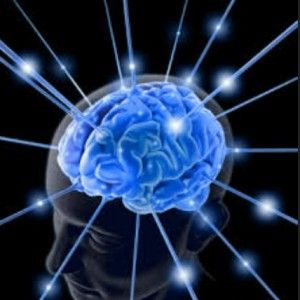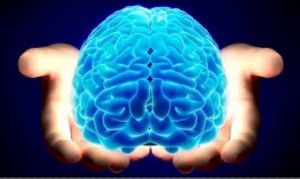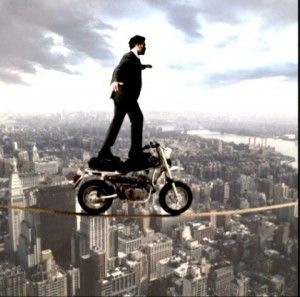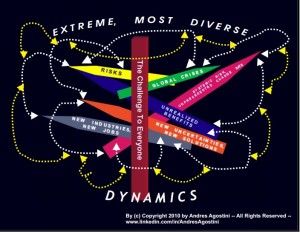Transleadership! By Mr. Andres Agostini
This is an excerpt from the conclusion section of, “…Transleadership!…” that discusses some management, leadership and futurism theories and practices and strategies.
To read the entire piece, just click the link at the end of article:
EXCERPT. Ensuing:
(…SUMMATION OF WHAT A TRANSLEADERSHIP LEADER DOES AND IS …)
# 1 – Is An Actionable Statesman.
# 2 – Thoroughly moral and ethical in deed and spontaneously projected example.
# 3 – Happily located and navigating through Century 21.
# 4 – By far, focused on solid and increasing education and perpetual mind expansion, chiefly those acquired by solving truly complex problems systematically.
# 5 – Self-Pedagogue forever. Teaches to self-tech to his / her crew for Life.
# 6 – Leads, Co-Leads, Follows, Co-Follows, Executes, Co-Executes, Builds, Co-Builds, Envisions, Co-Envisions, Paves and Co-Paves Never-Thought-Of Pathways.
# 7 – Intuitive, Counterintuitive, and seamlessly blends both of the above.
# 8 – Takes all – encompassing curiosity as it is operated in real time – beyond known and unknown extremes.
# 9 – Makes every mistake – own or that of the competitor – into his / her won victory.
# 10 – Doesn’t care how fluid and amorphous the limits, contexts and the dynamics of his / her blurred theater of operations are.
# 11 – Can strategize and prevail through many operational frameworks at once without getting bewildered.
# 12 – Challenges every assumption, doctrine and dogma ruthlessly and relentlessly, beginning with his / her own ones.
# 13 – Learns something practical, meaningful, and decisively productive every day.
# 14 – Heightens crew’s sense of urgency and of focus.
# 15 – Re-adapts and re-invents resiliently and effortlessly regardless of whatever constraints and increasing pressures stemming from the frame of reference.
# 16 – Operates multidimensionally and cross-functionally.
# 17 – Constantly and boldly sets pre-conditions to maximize the likelihood of his / her triumphs.
# 18 – Always selects and develops his / her leadership constituency.
# 19 – Creates and applies his / her own – along with that of the team – body of knowledge.
# 20 – Does never ever institute “best practices,” but UNIQUE, premium-graded approaches.
# 21 – Carries on much swifter that “life cycles” intrinsic to products, services, challenges, and complex problem solving.
# 22 – Does not get concerned about his / her adversaries since the uniqueness and ever-upgrading quality of tactics, strategies and stratagems as applied.
# 23 – Harmonizes issues immediately.
# 24 – His / her leadership is always (and robustly so) linked to concrete and unambiguous objective and goals.
# 25 – Always updates his methods, approaches, techniques, tactics, strategies, especially using those that are extraneous to so-called and already disrupted “history.” (Which one, that wrote by winners or that stated by losers or that always failing to have sufficient objectivity?)
# 26 – Continuously learns lessons – and improves those – both from incurred mistakes and from captured successes.
# 27 – Extracts information and knowledge – to be shared and brainstormed with the crew – out of everything done, thought, as well as to be executed regardless of the incumbent.
# 28 – Wins only based on merit, principle, legitimacy and lawfulness.
# 29 – Strategizes the granularity of detail of everything. There is no such a thing as a leader that is not a strategist and visionary.
# 30 – Embraces leading-edge (even weird) science and its stemming technological derivatives immediately.
# 31 – Enjoys phenomena and prevails as he / she navigates through said phenomena.
# 32 – Is never commonsensical and always challenging long-held assumptions as he / she institutes the most unorthodox and exuberant novel practices (lavishly so).
# 33 – De-tools, tools, re-tools the amplification of the individual and collective intelligence within his / her crew.
# 34 – Instills how to operate autonomously and jointly – in pursuit of the same goals and objectives – to his / her followers and co-leaders.
# 35 – Learns from his / her mistakes, but empathizes to learn also from the mistakes of others.
# 36 – Fluidly shares experience and practical knowledge across every incumbent in the crew.
# 37 – Only thinks and performs a la unthinkable thinking.
# 38 – Disrupt the boundaries of unthinkable thinking, always going beyond such boundaries.
# 39 – Transforms new problems and old problems into actionable breakthrough opportunities.
# 40 – In his / her case and exercising this type of leadership, strongly and coherently insists on and applies three aspects: CIVILITY, CIVILITY, CIVILITY!
# 41 – Before chaos, he / she instills more and more chaos – of greater magnitude, scale and speed – to level off and outsmart the frame of reference targeted.
# 42 – Drives OPS with directness and / or indirectness, as well as with the loose/control hybridization mode.
# 43 – Shares of defined values
# 44 – Elicits conceptions of practiced futures to deal with and countermeasure way in advance.
# 45 – Fuses technology innovation with business strategy as a tool for competitive advantage.
# 46 – Conceives early and distinguishes it and exploits it strategic surprises attributable to competitors.
# 47 – Ascertains that there is not a single stone left unturned.
END OF EXCERPT.
Please see the entire presentation at http://lnkd.in/dP2PmCP








